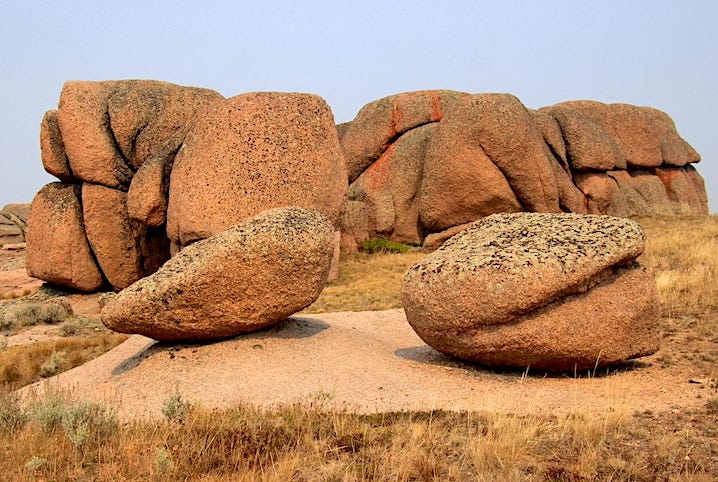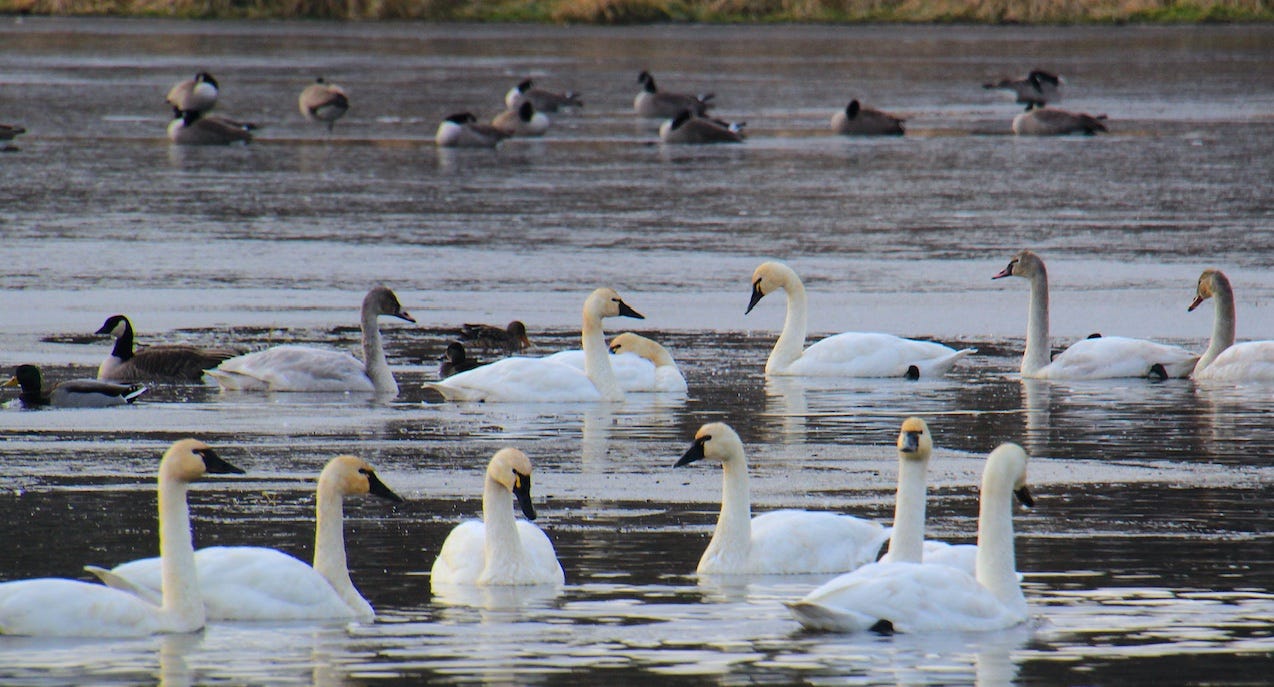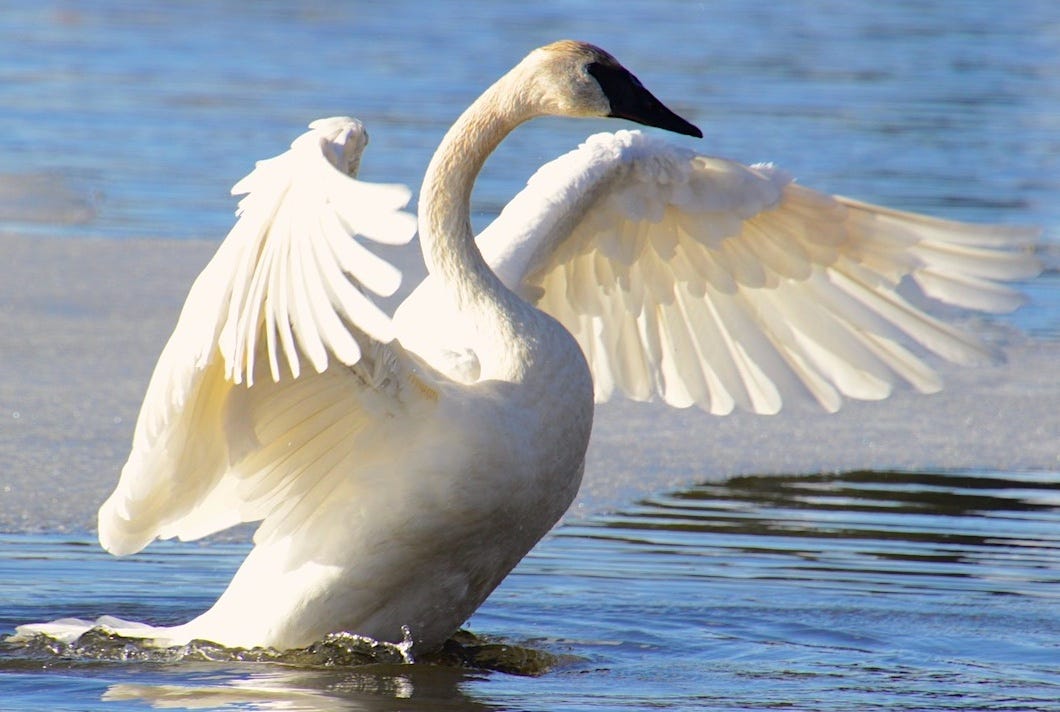Wind-sculpted Precambrian granite atop the Bighorn Mountains east of Lovell, Wyoming
Marvels of migration
It snowed in Seattle yesterday which is unusual for late February, but not unheard of. What surprises me, all the more, is the late winter, northward migration of Tundra and Trumpeter swans as they drop in on the archipelago of scabland lakes south of Spokane. Their arrival seems always sneak up on me, as if to rouse me from a winter stupor.
I wonder what the hurry is to get back to the arctic and wonder, also, about the energy they must expend to find open water along the way. But they don’t give interviews.
I marvel at the aesthetics of the juxtaposition between the gnarly terrain and the grace of these large birds with the hook-shaped necks. At least for me it’s a sight and experience that never gets old, comparable to what I feel on open ocean when dolphins or porpoises decide to swim alongside the boat.
Their visits south of Spokane are relatively new, by which I mean they wouldn’t have happened 20,000 years ago before the epic Ice Age floods, simply because the scabland lakes didn’t yet exist. A run of natural disasters (the calamitous and repeated emptying of glacial Lake Missoula) was necessary to remove countless tons of loessial soil—the dunes of the Palouse—and excavate depressions in the basalt bedrock that can hold water in the spring and often year-round. Strong and lovely winged creatures that they are, it would not have taken the swans very long to notice.
Huddling Tundra swans at the Slavin Natural Area south of Spokane
Wing-flexing Trumpeter Swan
To continue reading, please subscribe to The Daily Rhubarb










